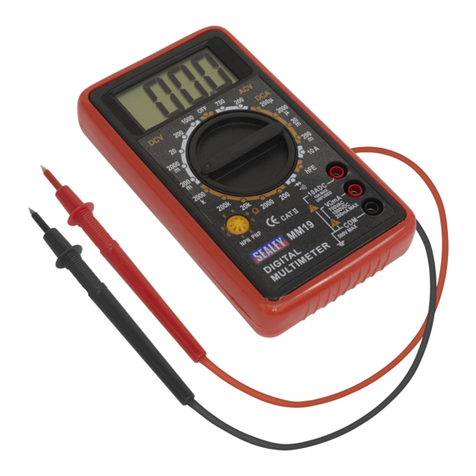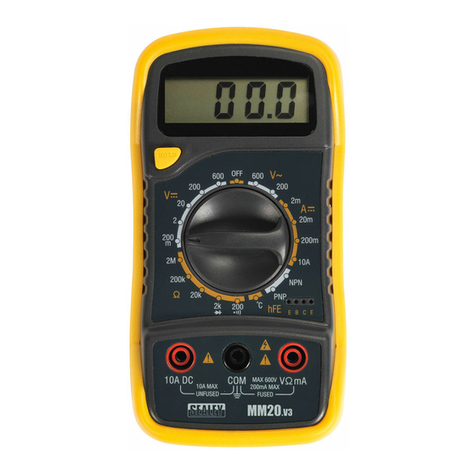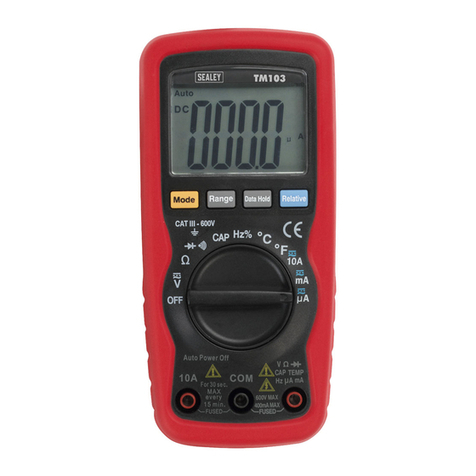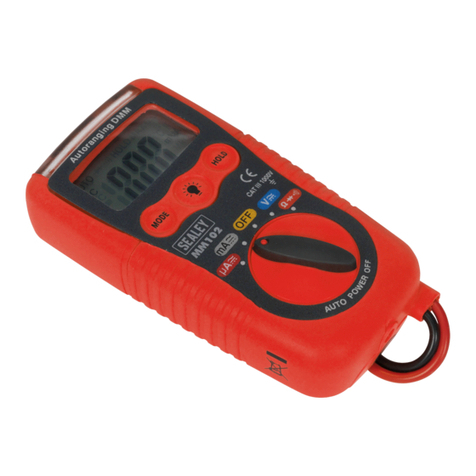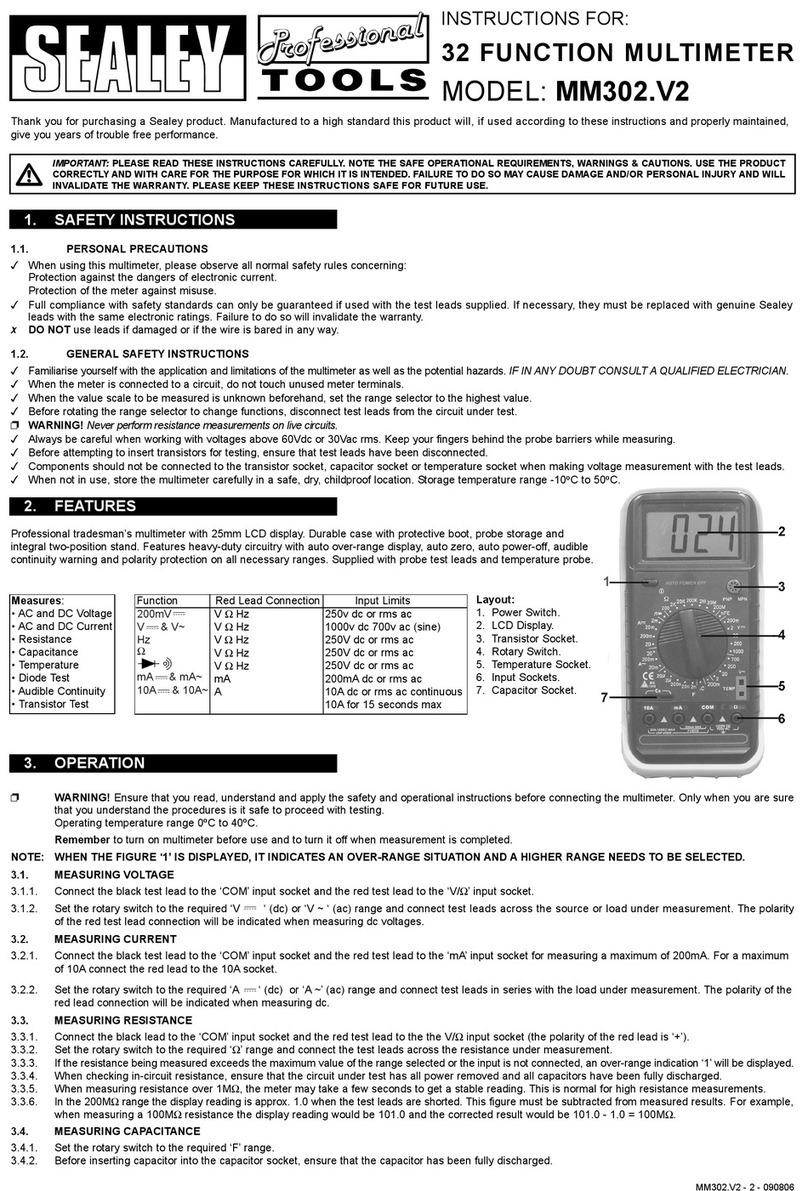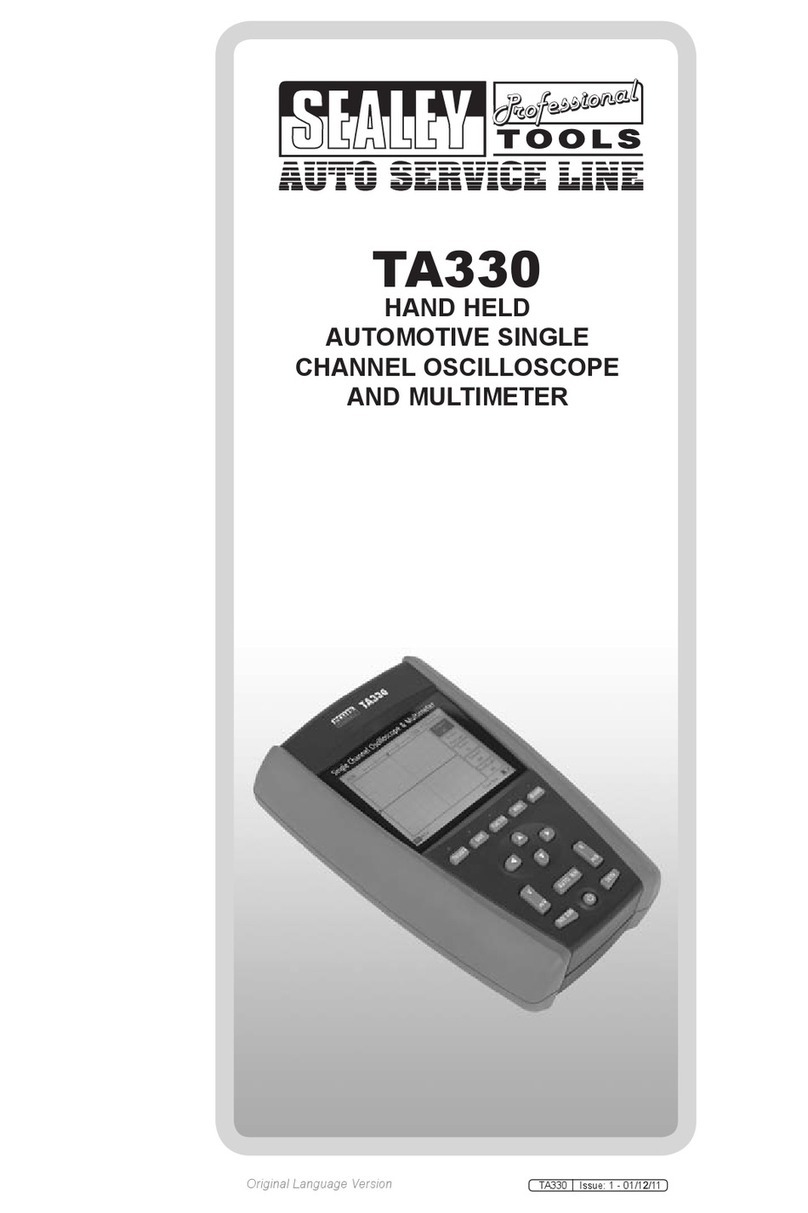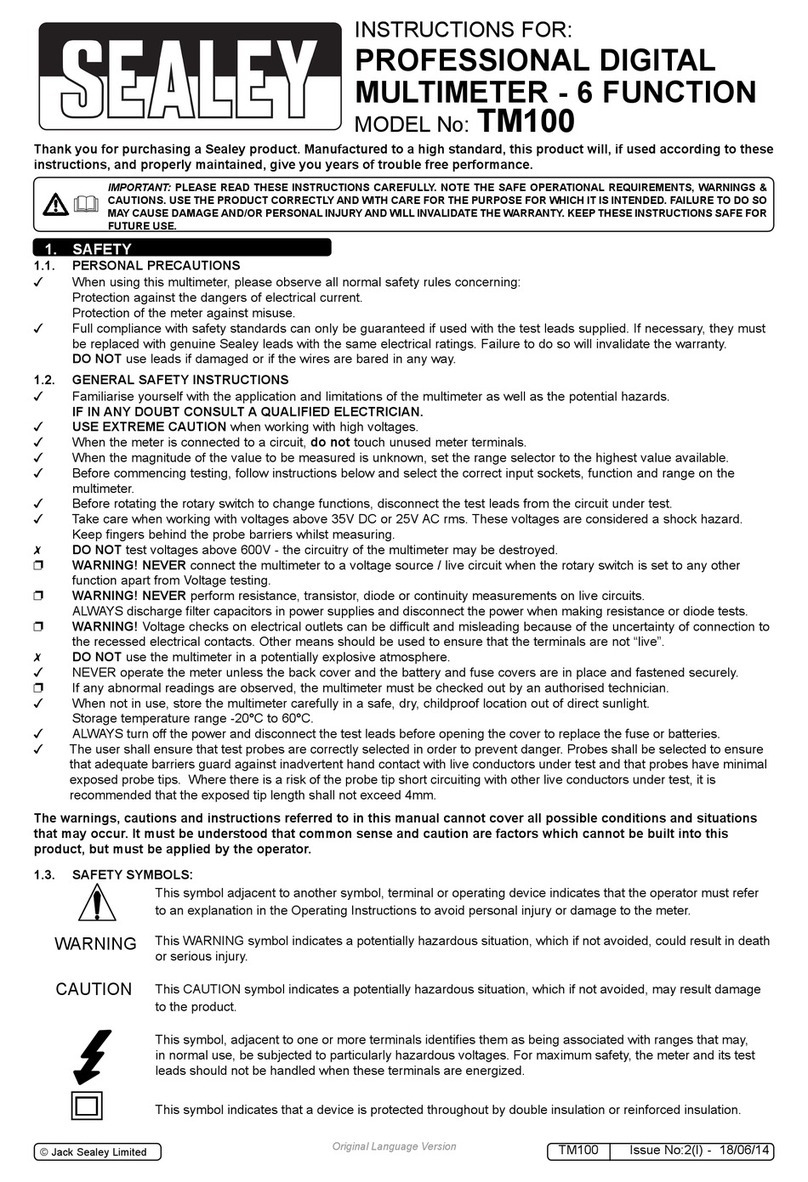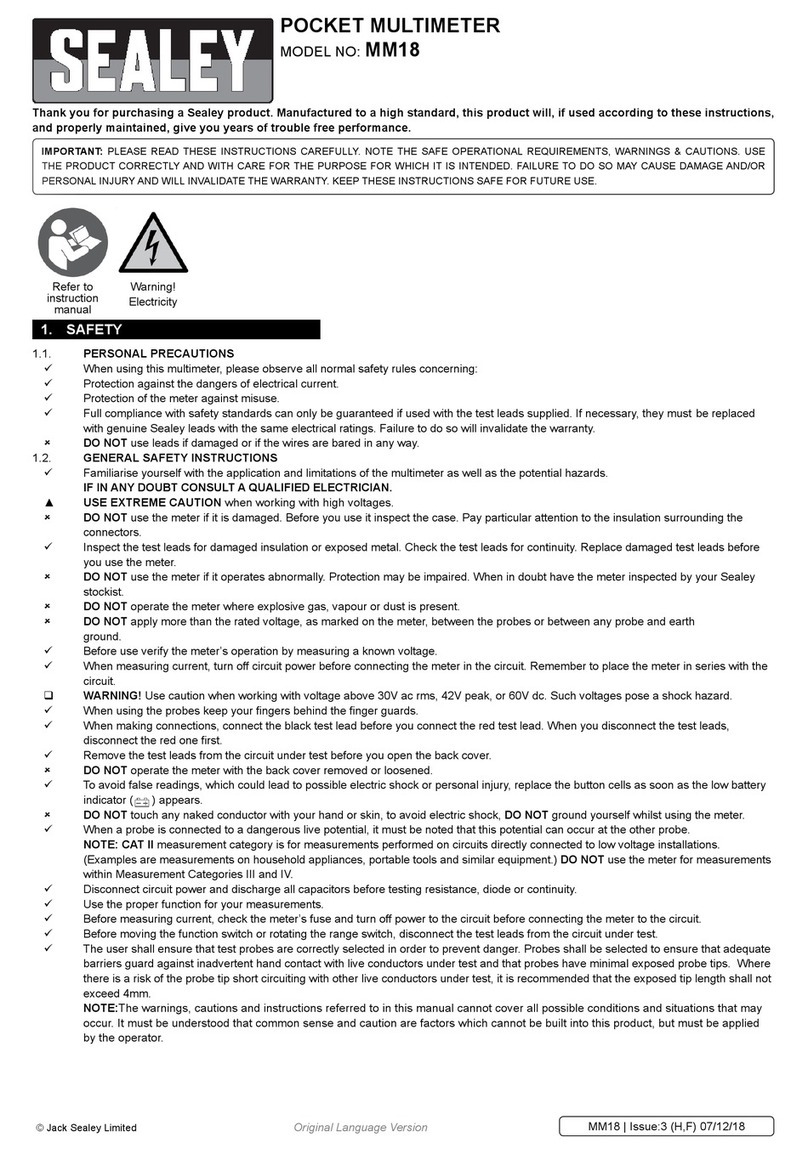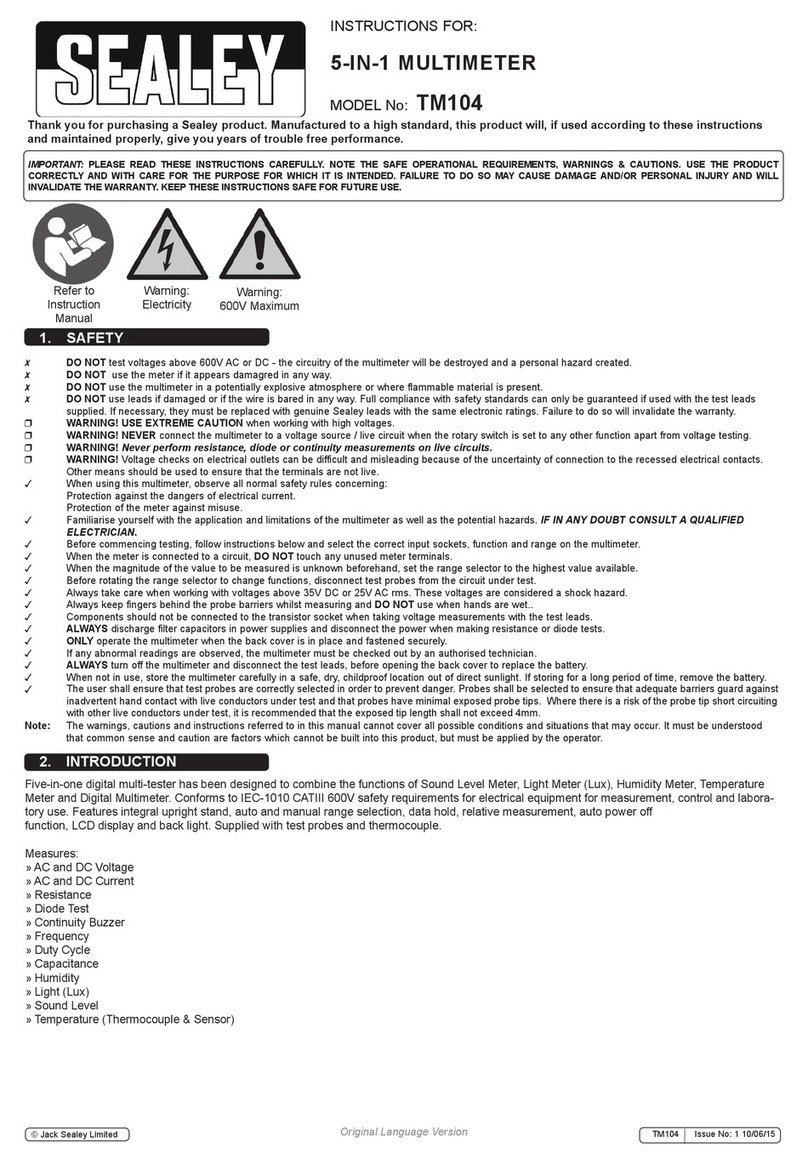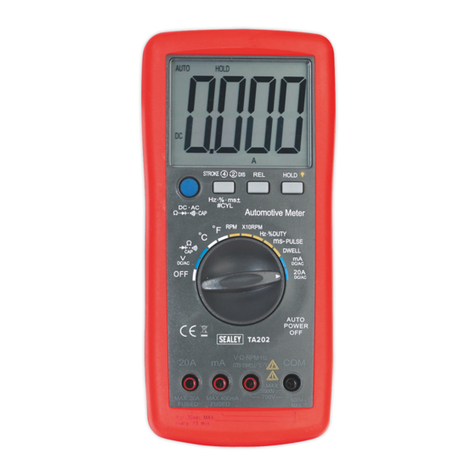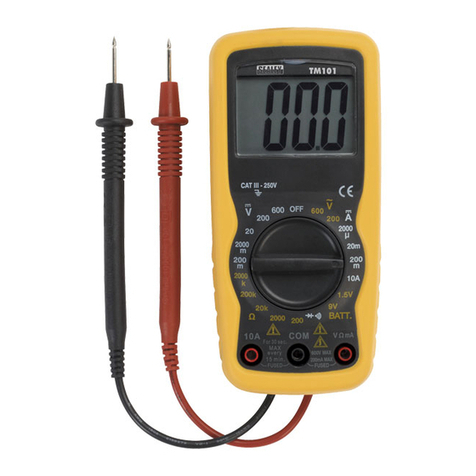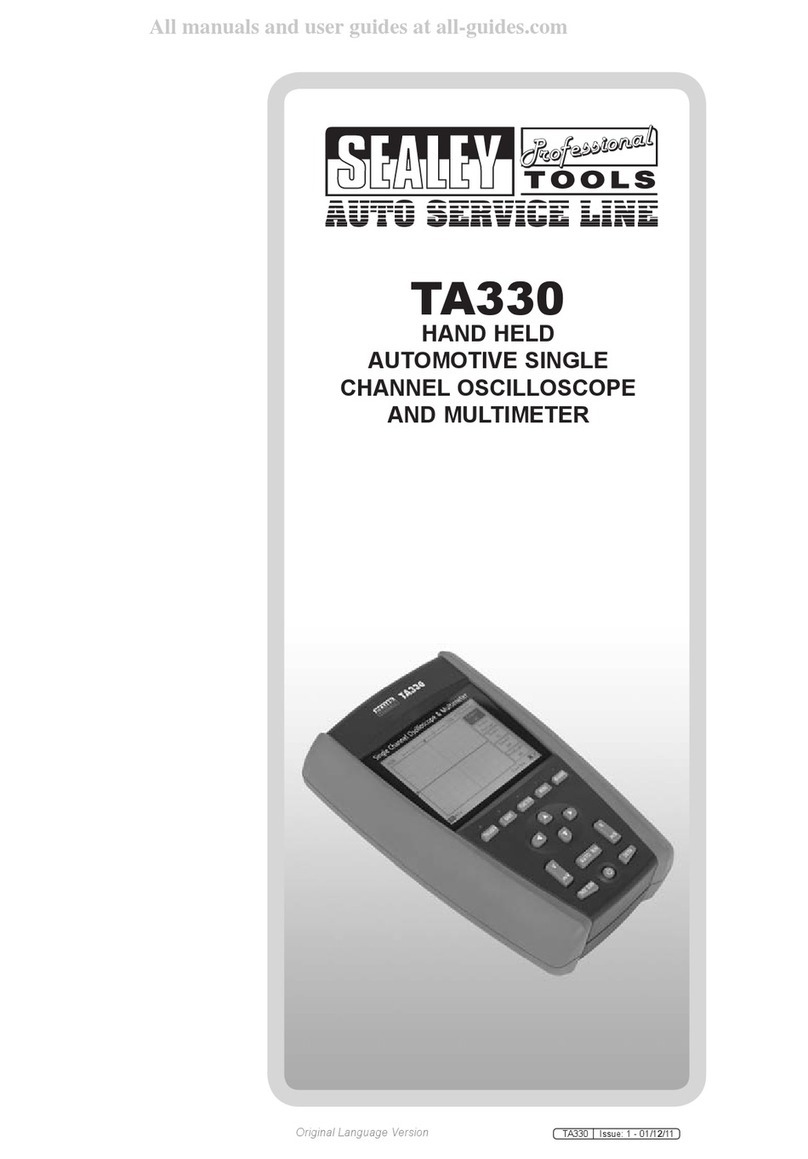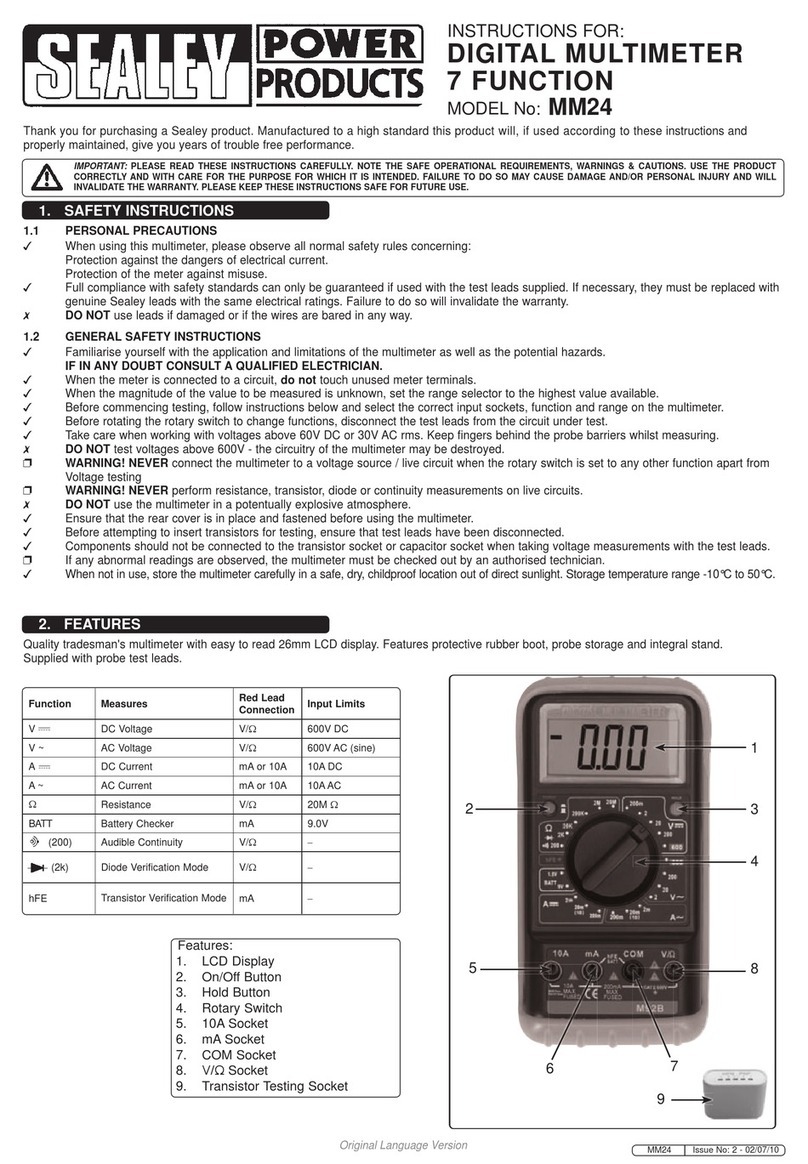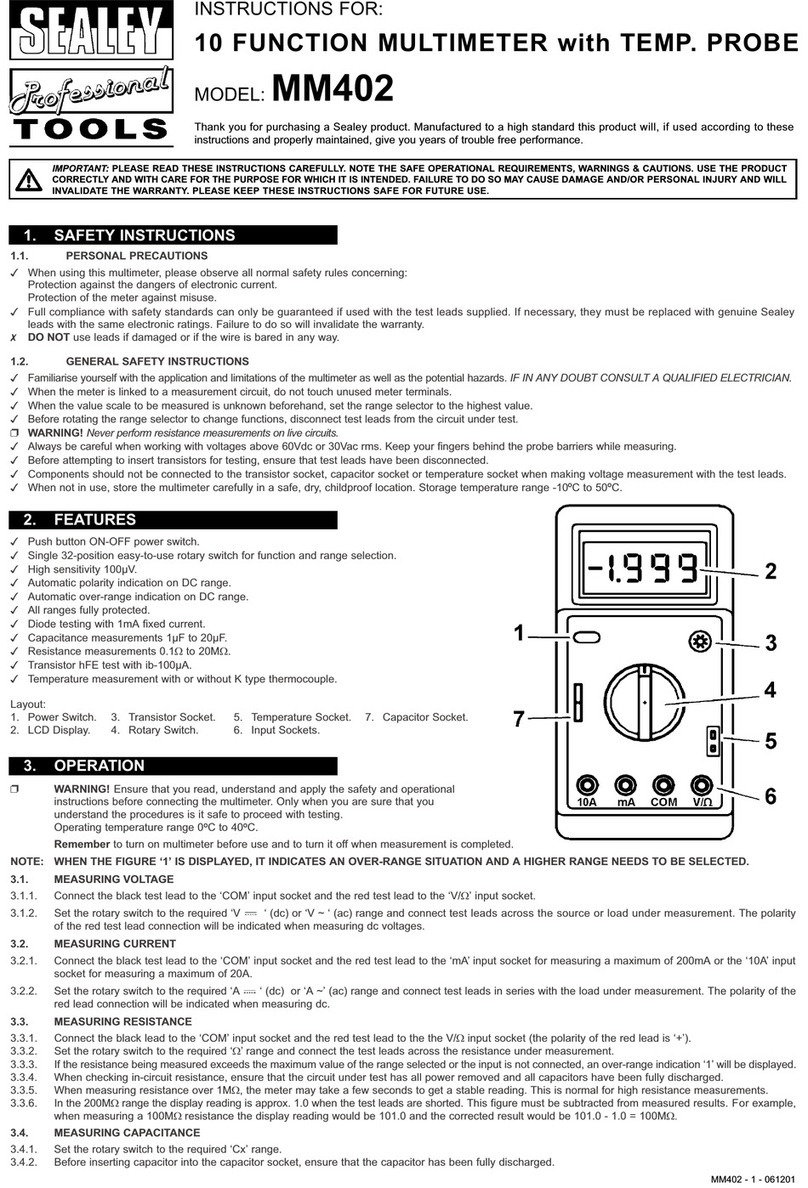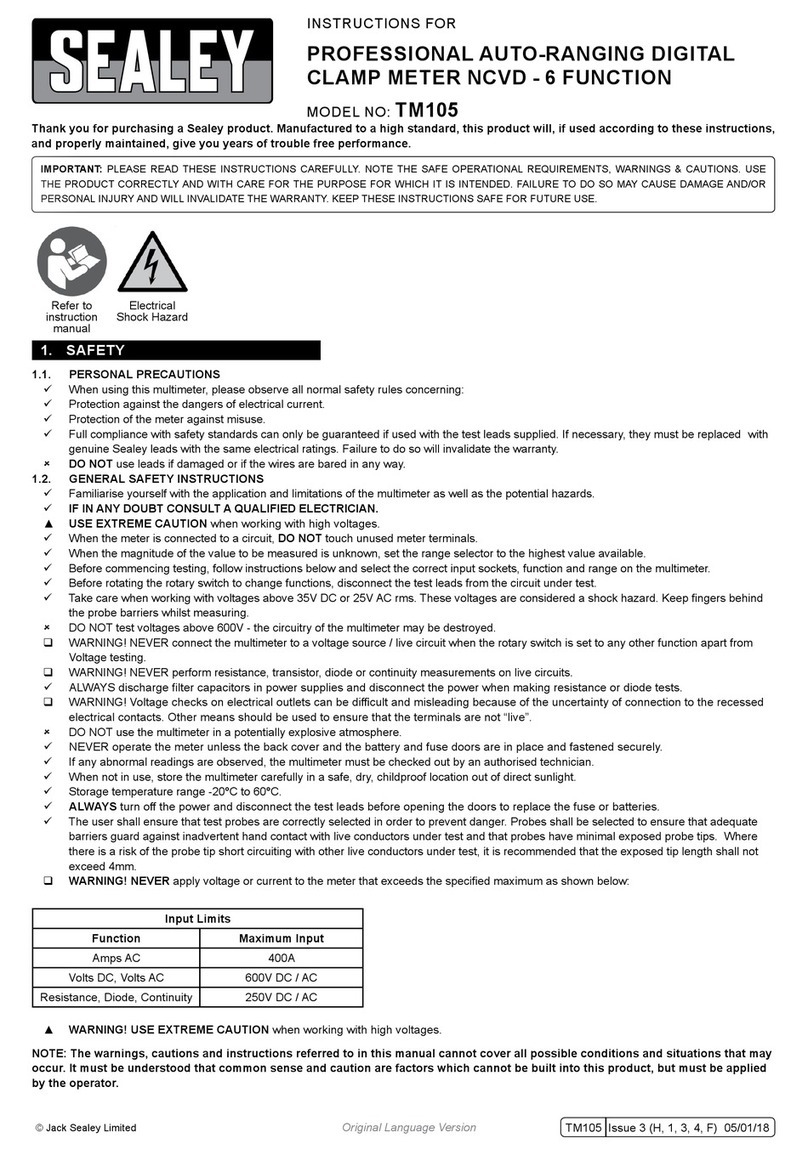
5.2.2. Insert the black test lead plug into the negative COM jack.
Insert red test lead plug into the positive V jack.
5.2.3. Touch the black test probe tip to the neutral side of the circuit.
Touch the red test probe tip to the “hot” side of the circuit.
5.2.4. Read the voltage in the display.
5.2.5. Press the HZ/% button to indicate “Hz”.
5.2.6. Read the frequency in the display.
5.2.7. Press the Hz/% button again to indicate “%”.
5.2.8. Read the % of duty cycle in the display.
5.3. DC CURRENT MEASUREMENTS
WARNING! DO NOT make 20A current measurements for longer than 30 seconds. Exceeding 30 seconds may cause damage to
the meter and/or the test leads.
5.3.1. Insert the black test lead plug into the negative COM jack.
5.3.2. For current measurements up to 6000µA DC, set the function switch to the µA position and insert the red test lead plug into the µA/mA
jack.
5.3.3. For current measurements up to 600mADC, set the function switch to the mAposition and insert the red test lead plug into the µA/mA
jack.
5.3.4. For current measurements up to 20ADC, set the function switch to the 10A/HZ/% position and insert the red test lead plug into the
10A jack.
5.3.5. Press the MODE button to indicate “DC” on the display.
5.3.6. Remove power from the circuit under test, then open up the circuit at the point where you wish to measure current.
5.3.7. Touch the black test probe tip to the negative side of the circuit.
Touch the red test probe tip to the positive side of the circuit.
5.3.8. Apply power to the circuit.
5.3.9. Read the current in the display.
5.4. AC CURRENT (FREQUENCY, DUTY CYCLE) MEASUREMENTS
WARNING! DO NOT make a 20A current measurements for longer than 30 seconds. Exceeding 30 seconds may cause
damage to the meter and/or the test leads.
5.4.1. Insert the black test lead plug into the negative COM jack.
5.4.2. For current measurements up to 6000µAAC, set the function switch to the µA position and insert the red test plug into the µA/mA jack.
5.4.3. For current measurements up to 600mAAC, set the function switch to the mA position and insert the red test lead plug into the µA/mA
jack.
5.4.4. For current measurements up to 20AAC, set the function switch to the 10A/HZ/% position and insert the red test lead plug into the
10A jack.
5.4.5. Press the MODE button to indicate “AC” on the display.
5.4.6. Remove power from the circuit under test, then open up the circuit at the point where you wish to measure current.
5.4.7. Touch the black test probe tip to the neutral side of the circuit.
Touch the red test probe tip to the “hot” side of the circuit.
5.4.8. Apply power to the circuit.
5.4.9. Read the current in the display.
5.5. RESISTANCE MEASUREMENTS
WARNING! To avoid electric shock, disconnect power to the unit under test and discharge all capacitors before taking any
resistance measurements. Remove the batteries and unplug cables.
5.5.1. SetthefunctionswitchtotheΩCAPposition.
Insert the black test lead plug into the negative COM jack.
InserttheredtestleadplugintothepositiveΩjack.
5.5.2. PresstheMODEbuttontoindicate“Ω”onthedisplay.
5.5.3. Touch the test probe tips across the circuit or part under test. It is best to disconnect one side of the part under test so the rest of the
circuit will not interfere with the resistance reading.
5.5.4. Read the resistance in the display.
5.6. CONTINUITY CHECK
WARNING! To avoid electrical shock, Never measure continuity on circuits or wires that have a voltage on them.
5.6.1. Set the function switch to the ΩCAPposition.
5.6.2. Insert the black lead plug into the negative COM jack.
Insert the red test lead plug intothepositiveΩjack.
5.6.3. PresstheMODEbuttontoindicate”“and“Ω”onthedisplay
5.6.4. Touch the test probe tips to the circuit or wire you wish to check.
5.6.5. Iftheresistanceislessthanapproximately50Ω,theaudiblesignalwillsound.Ifthecircuitisopen,thedisplaywillindicate“OL”.
5.7. CAPACITANCE MEASUREMENTS
WARNING! To avoid electric shock, disconnect power to the unit under test and discharge all capacitors before taking any capacitance
measurements. Remove the batteries and unplug the cables.
5.7.1. SettherotaryfunctionswitchtotheΩCAPposition.
5.7.2. Insert the black test lead plug into the negative COM jack.
Insert the red test lead plug into the positive V jack.
5.7.3. Press the MODE button to indicate “nF” on the display.
5.7.4. Touch the test leads to the capacitor to be tested.
5.7.5. The test may take up to 3 minutes or more for large capacitors to charge. Wait until the readings settle before ending the test.
5.7.6. Read the capacitance value in the display.
5.8. DIODE TEST
5.8.1. Set the function switch to green ΩCAPposition.
5.8.2. Insert the black test banana plug into the negative COM jack and the red test iead banana plug into the positive V jack.
Original Language Version
© Jack Sealey Limited MM104.V2 Issue 1 19/01/21

